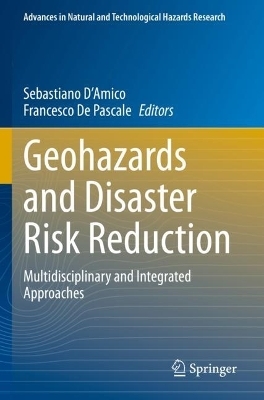
Geohazards and Disaster Risk Reduction
Springer International Publishing (Verlag)
978-3-031-24543-5 (ISBN)
- Part I Geohazards and Disaster Prevention: Approaches and Case Studies. - 1. Social Vulnerability and Geohazards: Review and Implications. - 2. Representations of Catastrophe Victims in Journalistic Narration: L'Aquila Earthquake of 2009. - 3. Perception of the Self-Exposure to Geohazards in the Italian Coastal Population of the Adriatic Basin. - 4. Urban Transformation, Collective Memory, and Disaster Preparedness: A Case from Turkey. - 5. Perceptions and Practices of Disaster Governance in Countries with Long History of Centralized Administration: A Case Study of Balikesir Municipalities, Turkey. - 6. Reducing the Risk from Asbestos in the Built Environment During Natural Hazard Events. - Part II Climate Change Perspectives. - 7. Communicating Weather Risk in the Twenty-First Century: Approaches Using Video Games and Virtual Reality. - 8. Assessing Coastal Flood Impact on Buildings: A Climate Change Perspective from the Developing Nation. - 9. Coping with Disasters: What Place Names Can Tell Us About Anthropocene and Climate Change. - 10. Climate Change and the Rising Disaster Risk in Africa. - 11. Water and Geohazards in Lower Casamance: Risk Perception and Prevention Strategies of the Populations in the Baïla Marigot Basin (Casamance, Senegal). - 12. The Risk of Marine Erosion in Tunisian Beaches: A Retrospective Reading for a Prospective Vision. - 13. African Indigenous Understanding of Climate Change and Disaster Risk Nexus. - Part III Resilience and Disaster Preparedness. - 14. Building Resilience in Times of New Global Challenges: A Focus on Six Main Attributes. - 15. Community Resilience Through Recovery: Capacity Building and Sustainability. - 16. Community Resilience Through Local Action: AKAH's Winter Preparedness and Avalanche Readiness Programme. - 17. Civic Resilience: Botanical Gardens in North America, Birth, Development, and Environmental Awareness. - 18. Measuring Willingness to Pay for Community-Based Resilience Training in the Southeast USA. - 19. Where There Is Smoke: Normalizing Community Preparedness and Geohazard Resilience: A Wildfire Perspective. - 20. Istanbul Resilience Approach Against Earthquake. - Part IV Pandemic, Vulnerabilities and Ethics. - 21. The Covid-19 Protection Index (CPI) as a Way to Identify Vulnerabilities and Disparities Across Brazilian Territories. - 22. The Social Vulnerability Index: A Literature Review. - 23. Geoethics, Environmental Law and the Necessary Dialogue Between Knowledges.
| Erscheinungsdatum | 07.05.2024 |
|---|---|
| Reihe/Serie | Advances in Natural and Technological Hazards Research |
| Zusatzinfo | XI, 507 p. 138 illus., 110 illus. in color. |
| Verlagsort | Cham |
| Sprache | englisch |
| Maße | 155 x 235 mm |
| Themenwelt | Naturwissenschaften ► Biologie ► Ökologie / Naturschutz |
| Naturwissenschaften ► Geowissenschaften ► Geologie | |
| Schlagworte | Landslide Susceptibility • Risk Prevention • Tsunami Risk • unmanned aerial vehicle • Vesuvius Emergency Plan |
| ISBN-10 | 3-031-24543-1 / 3031245431 |
| ISBN-13 | 978-3-031-24543-5 / 9783031245435 |
| Zustand | Neuware |
| Haben Sie eine Frage zum Produkt? |
aus dem Bereich


